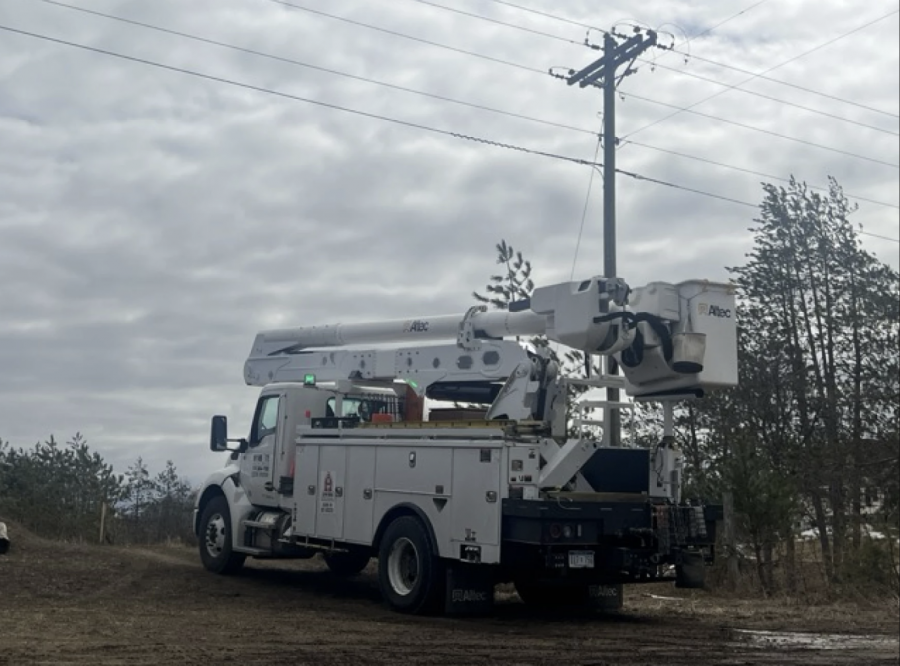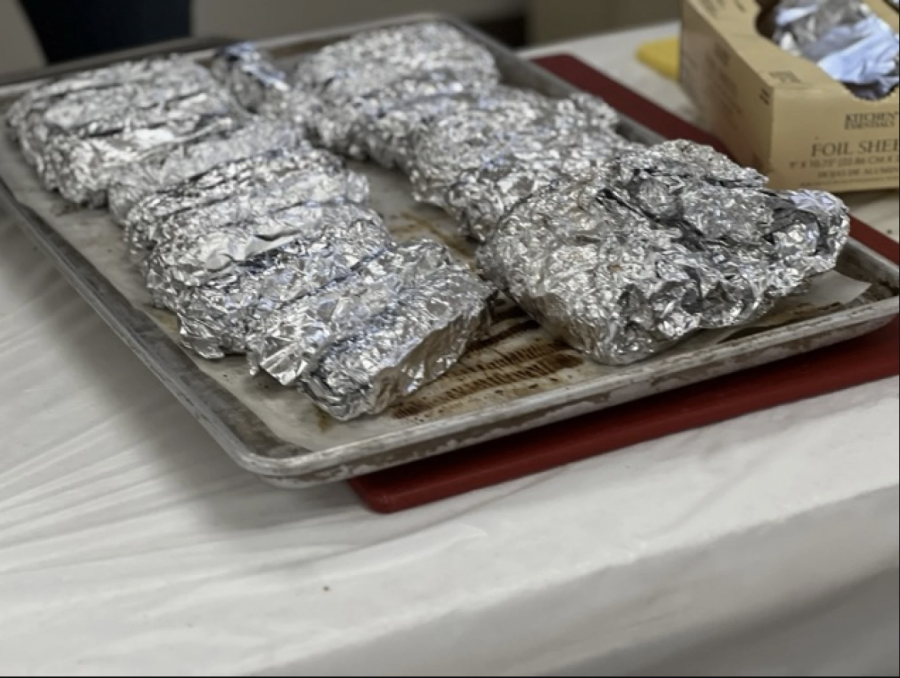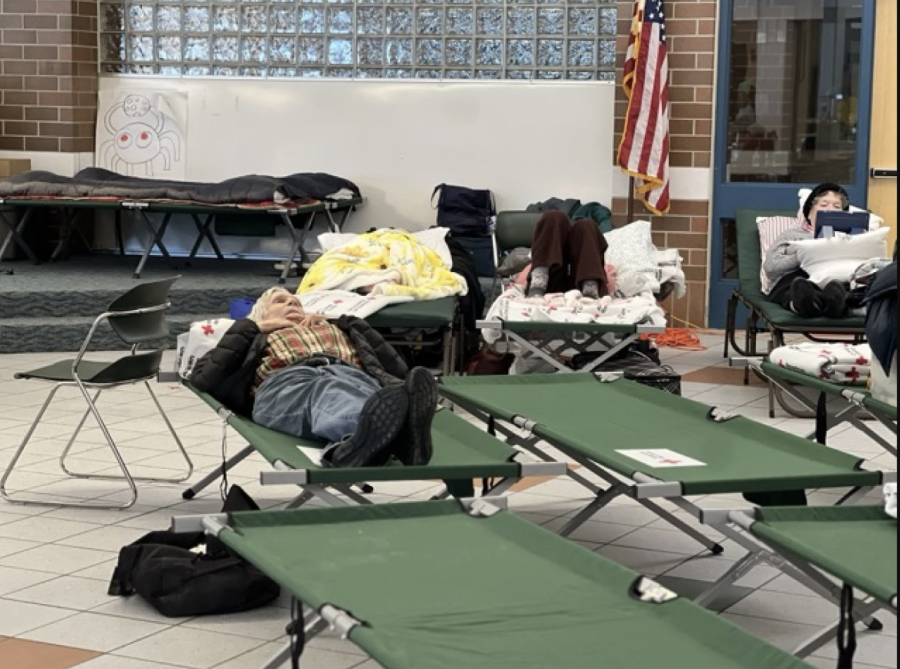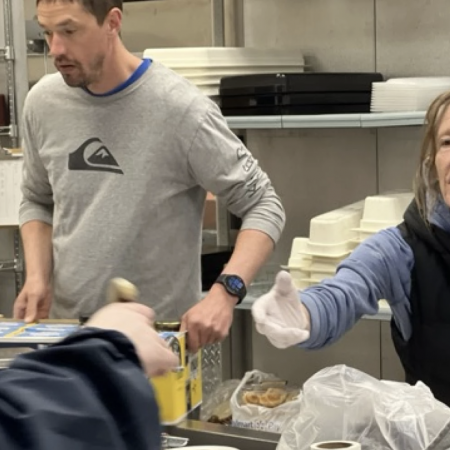One week later: Northern Michigan communities look to long-term recovery after ice storm
In communities around Little Traverse Bay, the snow and ice is starting to melt but clear signs of destruction remain.
It’s being called the worst ice storm in northern Michigan in modern history, knocking out power to about 100,000 homes and businesses.
One week later, fallen trees still line the road shoulders. Dozens of utility vehicles are parked behind orange cones. And hundreds were still without power as of April 4.
The workers who’ve poured in from across the state are getting the job done. According to outage maps, power started coming back on in downtown areas at the end of last week.
But some residents say recovery from the ice storm will take more than just turning the lights back on.
Power restored to cities
At the Community Reformed Church in Charlevoix, volunteers packed away pans of ground beef. Over the past few days, they worked by lantern light to serve hot meals to those seeking shelter.
Lights at the church came back on Wednesday. Buns, chips and sloppy joe mix were left over and the group that came for lunch Thursday was smaller than it was earlier in the week.

To Pastor Chip Sauer, those are good signs.
“Power lines have been down all over the place. It is like the apocalypse, like a bomb exploded,” he said. “In the city, it doesn’t feel like that anymore. It’s gotten back to normal. The lights are on. The restaurants are open. But there’s still a handful of people [without] power.”
The situation is much the same further north in Petoskey.
Many gas stations are reopened, providing critical fuel for line workers and generators. City Manager Shane Horn says about 95% of Petoskey’s service area had power as of Thursday, April 3.
The quick turnaround, he said, is owed to the city’s mostly underground power lines.
“Having that percent of our community undergrounded has truly been a blessing in that we don’t have similar issues that other communities have with downed power lines and utility pole issues,” Horn said.
Rural communities still in response phase

While cities are starting to see a return to normal, those living in more rural areas are still in what emergency managers call “the response phase.”
Great Lakes Energy, which still has nearly 20,000 customers without power, established a camp for utility workers in Otsego County on Saturday — one of the hardest hit areas. GLE chief executive Shaun Lamp said the company hopes to “substantially restore” many areas by April 8, it could take longer for more backcountry areas.
On the north side of Little Traverse Bay in Harbor Springs, Shay Elementary School served as one of the busiest warming stations in the area.
City police officers were stationed at the front entrance, keeping a list of names in front of stacks of water bottles. Nurses with the American Red Cross brought dozens of cots that lined the school’s cafeteria.
The people who had to stay the night were mostly elders. That’s because a housing community for low-income seniors called the Village of Hillside lost power. Some had to stay to power oxygen machines or get medication.
“Nobody wants to leave home and sleep in a school with all these people, but I think they’ve become accustomed to it,” said Matthew Bush, Hillside’s service coordinator. “I mean, they’ve come to realize that there’s not much of a choice. It’s either this or be very, very cold.”

Despite this, the attitude at Shay Elementary is positive, especially among the volunteers.
“It’s been overwhelming in, like, a really great way, but also just a really devastating way at the same time,” said Jessica Mills, a fourth grade teacher at Shay Elementary who’s been helping coordinate the shelter. “Initially, I was just watching the door to let people in and make sure they got settled and answered questions. Since then, I was kind of made the point person.”
The school’s cafeteria is staffed by restaurant workers from downtown Harbor Springs. They’ve been serving free hot meals three times a day since the shelter opened.
“Everyone has been helping, like the police officers’ wives have all been with their parents, my parents, like the whole community, has really just come together,” Mills said. “And we couldn’t have done it without every single other person.”
Mills said she’s eager for recovery to begin and that she hopes her school reopens soon. Helping out has been a good distraction but she’s eager to check in on all her students she hasn’t seen in days. Some of their families, she said, will deal with the aftermath of this storm for months.
“I just think there’s so much we need to do. People have gone days without being able to contact their loved ones because the service has been atrocious. People’s fridges are going to need to be cleaned out,” she said. “It just feels like any support would help.”
Editor’s note: This story was originally published by Interlochen Public Radio on April 7, 2025.
Trusted, accurate, up-to-date.
WDET strives to make our journalism accessible to everyone. As a public media institution, we maintain our journalistic integrity through independent support from readers like you. If you value WDET as your source of news, music and conversation, please make a gift today.
The post One week later: Northern Michigan communities look to long-term recovery after ice storm appeared first on WDET 101.9 FM.


